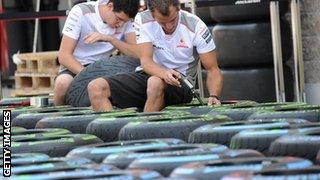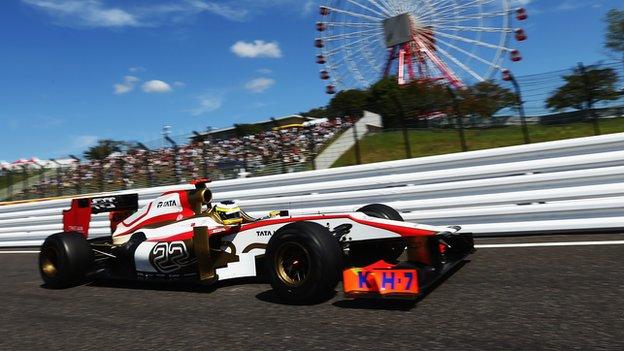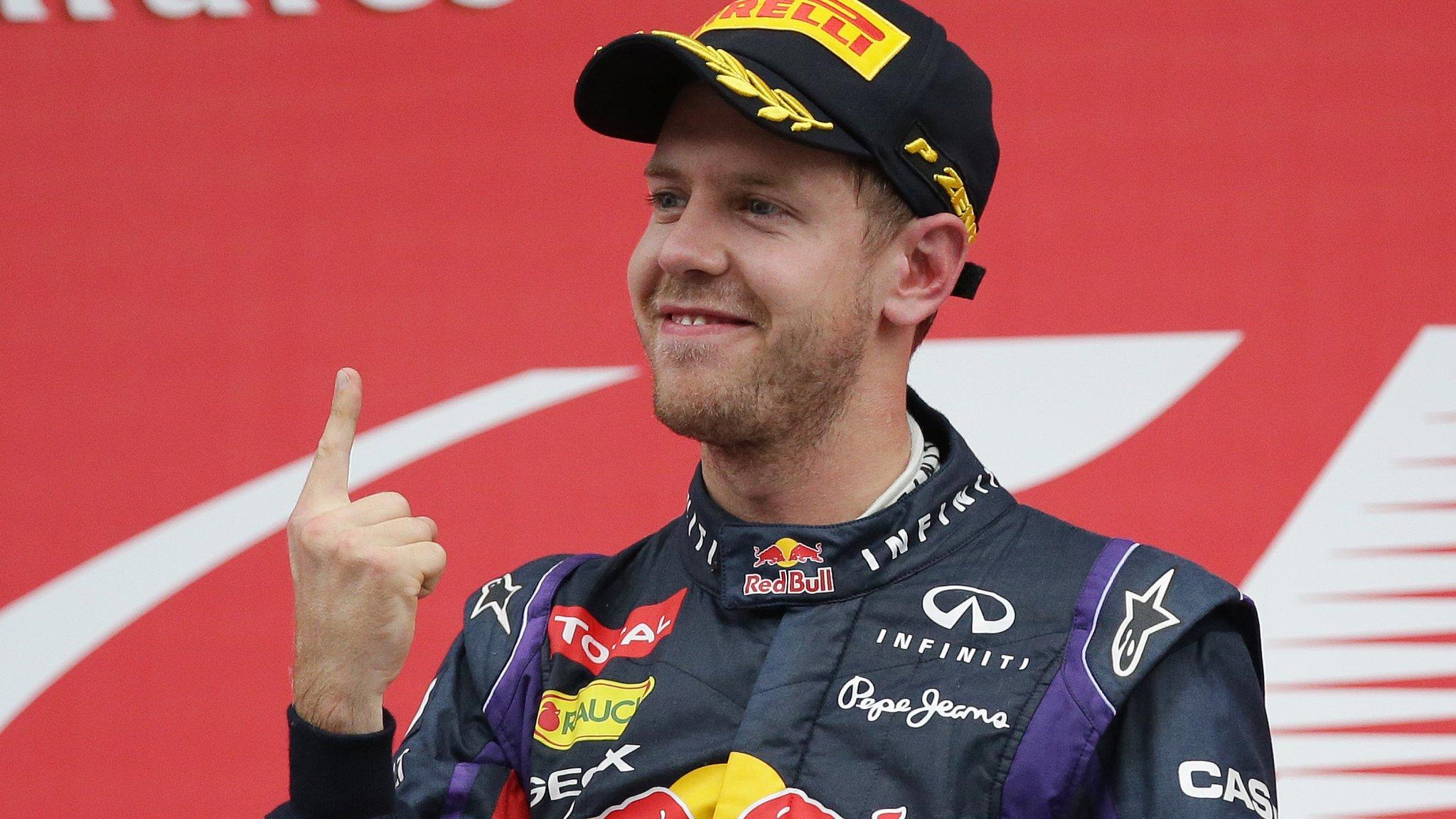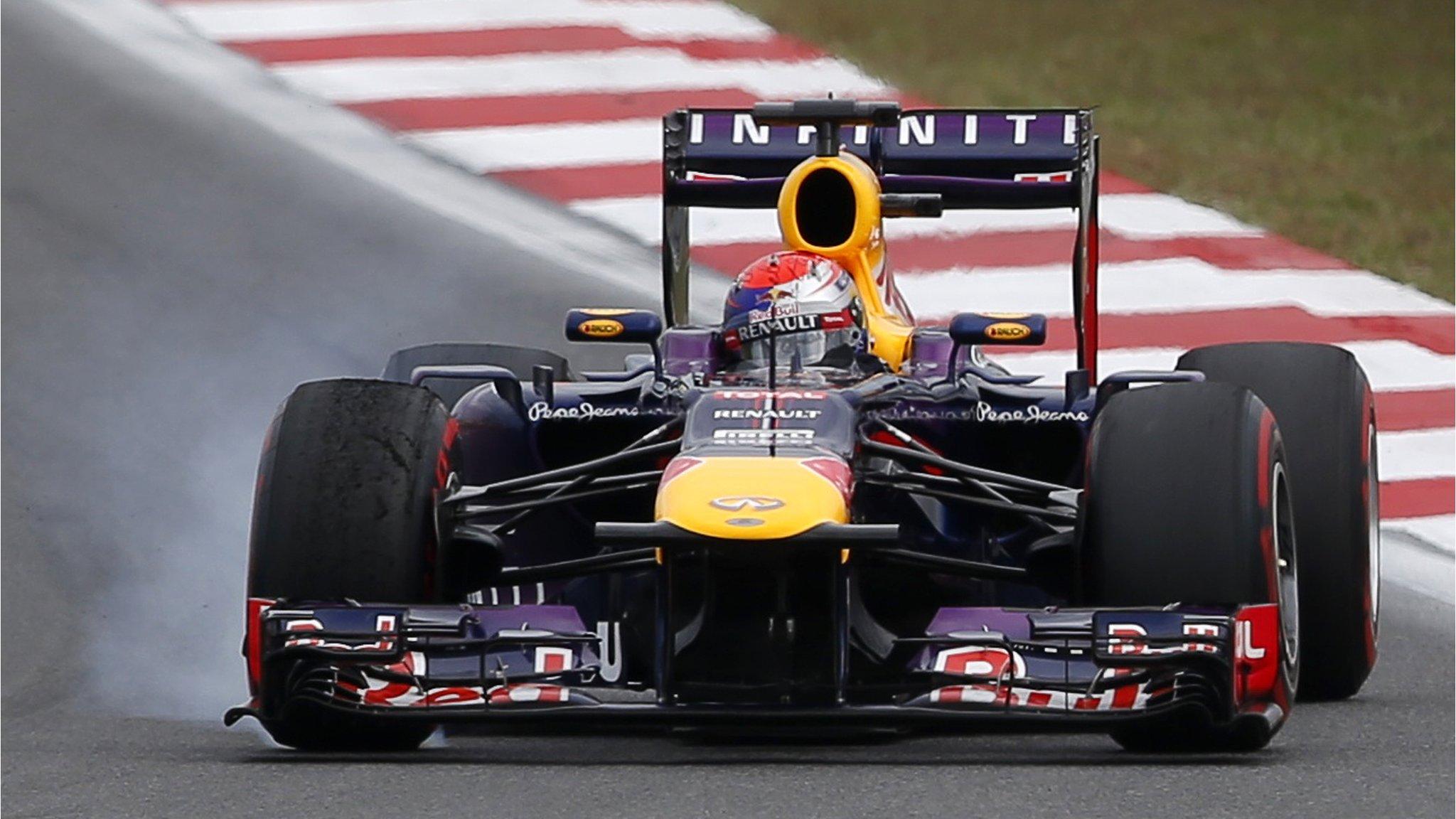Japanese Grand Prix: How to approach the Suzuka track
- Published
Suzuka, which hosts the Japanese Grand Prix this weekend, is a really tough circuit.
It is in the same bracket as Spa and Silverstone, both from an engineering and a driving point of view.
The whole lap is a sequence of really challenging corners.
The fast Esses at the start of the lap after Turns One and Two are especially difficult - very, very quick and demanding.
Because one corner of the sequence leads on to the other, if a driver starts with a problem, it magnifies the further through the Esses he goes. And the last part of that section, the long, uphill left-hander called Dunlop, is the most demanding of all.
That set of corners is 10 seconds or so of the lap time, and if a driver does not get on the right line, he will pay a big price.
The challenge of getting through there quickly lights every racing driver's eyes up. All drivers love fast corners, so they adore that part of the lap.
But it does not end there. The two Degner corners are very difficult in their own way, and the same goes for the double left-hander at Spoon Curve and the 200mph+ corner known as 130R.
A driver can make every part of the lap count at Suzuka, whereas there are a lot of circuits with stop-and-go corners where the driver cannot contribute that much.
The only part of the track no-one really likes is the final chicane - that is just a bounce-over-the-kerbs job.
Mistakes carry a cost
Drivers have to treat Suzuka with respect because if they do not, it can bite. The run-off areas are not especially big, and a mistake quite often means a crash.
That is what makes it a great racing circuit. On these modern tracks with acres of run-off, a "rock ape" - as untidy, less skilled drivers are known in motorsport - can do a good job without hurting himself. Suzuka is not like that.
The two Degner corners are a good example. They are among the slower corners at Suzuka, but they are tough and there is no room for error.
You see a lot of drivers having moments there. I'm not completely sure why - and the drivers do not seem to know either - but I think there are a couple of reasons.
First of all, the first one catches drivers by surprise a bit. They approach it at very high speed and it sort of jumps out at them.
If they get through that, the second one comes straight afterwards and sucks them in. It tempts them to go faster but the grip is not there. And there is almost no run-off area, because the track is just about to go under the bridge that carries the straight up to 130R, so a wrong entry means a meeting with the wall on the outside on the exit.
What the car needs
Suzuka is just as demanding of the cars as it is of the drivers. It requires very good high-speed stability, both in terms of the mechanical stiffness of the car and the aerodynamic balance.
Most quick corners in F1 are sort of 90 degrees, and in that situation normally the balance would be towards understeer. But you cannot afford to have understeer at Suzuka's Esses, because then the car starts running wide all the way through them.
Because the driver is accelerating the car through there, the tendency is for the car to understeer - be reluctant to turn. So sometimes it is better to end up with a car that has a slightly nervous rear end to make sure you get that section of the track pretty good.
So the most important aspect of the car at Suzuka is a strong front end aerodynamically, to keep the car on line for the next corner that is coming.
That, though, can make the car difficult to drive through a long corner such as Spoon, where in an ideal world you would want the rear planted.
So Suzuka is full of compromises, both from a driving and engineering point of view.
Ultimately, if the driver says the car is good through the Esses, really fun, that's when you feel as an engineer you have succeeded because those corners are so difficult.
To get the right aerodynamic balance the car needs to be set up very stiffly to provide a stable aerodynamic platform. And you have to pay a bit of a price at the chicane, which is a bit bumpy.
Questions over the tyres
Pirelli has chosen the "medium" and "hard" tyres for Suzuka. In Korea last weekend, we saw that the medium tyre was getting overworked.

Pirelli's tyres have been scrutinised this season
I do not think anyone predicted that, and I suspect it was because the track temperature in the race had dropped down by about 5C compared to qualifying.
Because the track was not hot enough, the tyre cools down too much. That means the cornering forces ripped off the top layer of rubber, and kept on doing it until the tyre was worn out.
It would not surprise me to see the same problem at Suzuka with the medium tyre.
Pirelli need to be looking at the stiffness of the construction of the compound and scratch their heads quite seriously about stopping that happening.
No stopping Vettel (probably)
Sebastian Vettel has been on pole for the last four Japanese grands prix and won three of them.
Ironically, the one he did not win was in 2011, when Red Bull were at their most dominant. Then, he was beaten by Jenson Button's McLaren and Fernando Alonso's Ferrari because the Red Bull was using up the tyres too much.
On the evidence of the last few races, I do not expect him to have the same trouble this year.
In the real world, we can all dream of someone beating Vettel in Suzuka, but if they have a clean weekend, I think he and Red Bull will blitz it.

Vettel celebrates winning at Suzuka in 2012
But Vettel may well have some competition from team-mate Mark Webber.
Suzuka is a track that needs bravery as opposed to finesse. A couple of years ago, Vettel had the finesse for the low-speed tracks but not the bravery for the high-speed ones, where Webber was often stronger.
The problem for Webber is Vettel has gone away and worked out what he needs to do on the high-speed tracks but has kept all his finesse on the others.
If anyone is going to challenge Red Bull, it should be Mercedes, but I am getting more and more disappointed in them as a team.
In Lewis Hamilton and Nico Rosberg, they have the best driver line-up on the grid, in terms of two young guys who can do it, and the team are not doing the job.
Both cars went backwards on Sunday in Korea, and I remain mystified by the way they ran the race strategically, regardless of their justifications for it.
Mercedes have to wake themselves up a bit and ask themselves some serious questions about what is going on.
It looks like Red Bull have moved forwards and there is no doubt they have, but part of that is regression from Mercedes.
Gary Anderson is the former technical director of the Jordan, Stewart and Jaguar teams. He was talking to BBC Sport's Andrew Benson
- Published7 October 2013

- Published6 October 2013

- Published6 October 2013

- Published6 October 2013